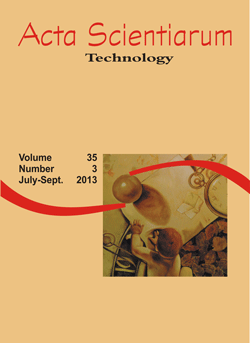<b>The effect of different photoactivation sources on a nanocomposite resin: LED, halogen and argon laser application</b> - doi: 10.4025/actascitechnol.v35i3.16238
DOI:
https://doi.org/10.4025/actascitechnol.v35i3.16238Palavras-chave:
photopolymerization, mechanical properties, infrared spectroscopy, composite resinResumo
This paper evaluates the effects of different light sources on the monomer conversion (DC%) and Vickers microhardness number (VHN) of a nanocomposite resin. Three different depths were measured in this study (1, 2 and 3 mm), and photoactivation methods including a halogen lamp, a LED and an argon ion laser were used. In contrast to other studies, the conditions for each photoactivation source such as the exposure time and the same power density were considered and kept the same. It was also shown that increasing the depth lowered the VHN. At each of the depths, it was observed that the three light sources behaved similarly. The correlation between the VHN and DC% is shown. However, only a weak correlation was observed, which implies that a higher DC% value does not necessarily indicate a higher VHN.
Â
Downloads
Downloads
Publicado
Como Citar
Edição
Seção
Licença
DECLARAÇíO DE ORIGINALIDADE E DIREITOS AUTORAIS
Declaro que o presente artigo é original, não tendo sido submetido í publicação em qualquer outro periódico nacional ou internacional, quer seja em parte ou em sua totalidade.
Os direitos autorais pertencem exclusivamente aos autores. Os direitos de licenciamento utilizados pelo periódico é a licença Creative Commons Attribution 4.0 (CC BY 4.0): são permitidos o compartilhamento (cópia e distribuição do material em qualqer meio ou formato) e adaptação (remix, transformação e criação de material a partir do conteúdo assim licenciado para quaisquer fins, inclusive comerciais.
Recomenda-se a leitura desse link para maiores informações sobre o tema: fornecimento de créditos e referências de forma correta, entre outros detalhes cruciais para uso adequado do material licenciado.















